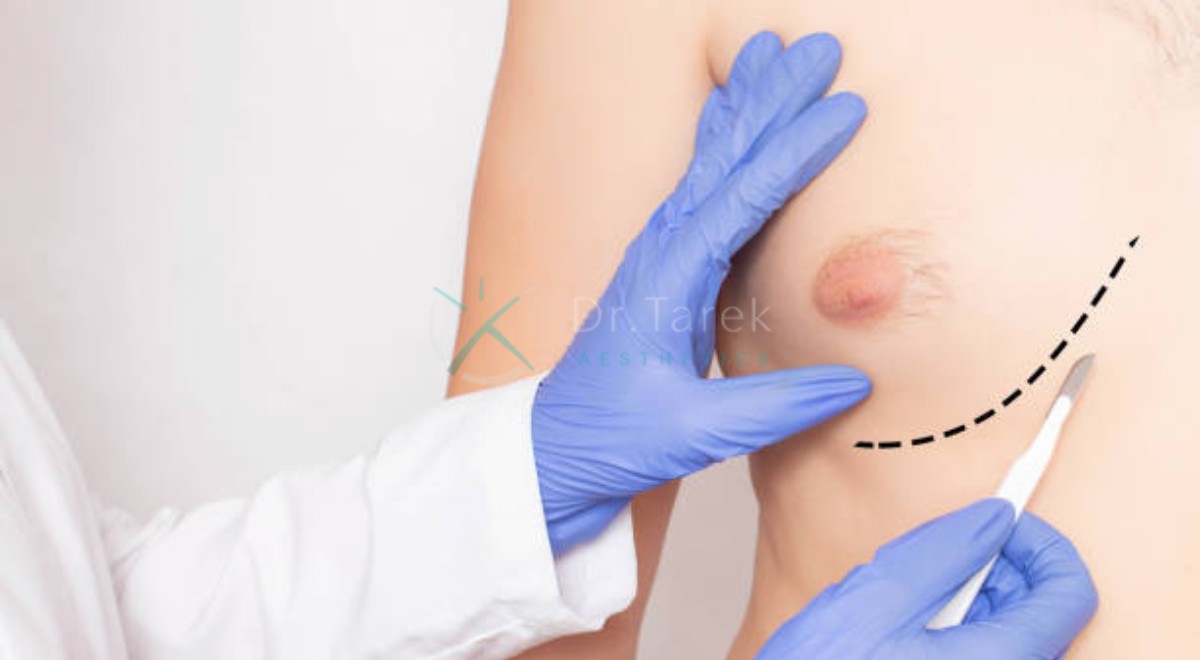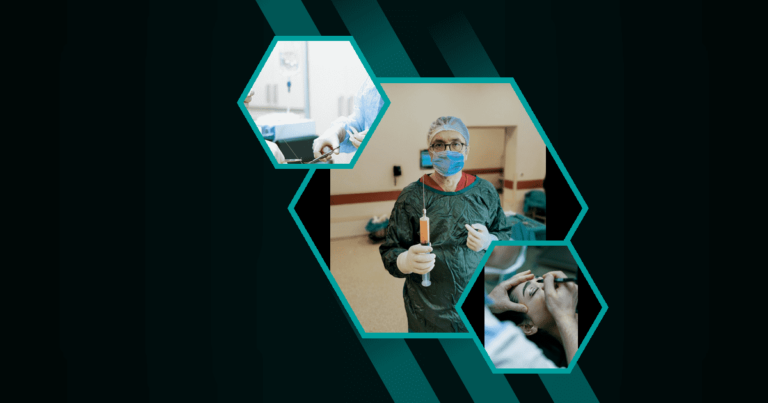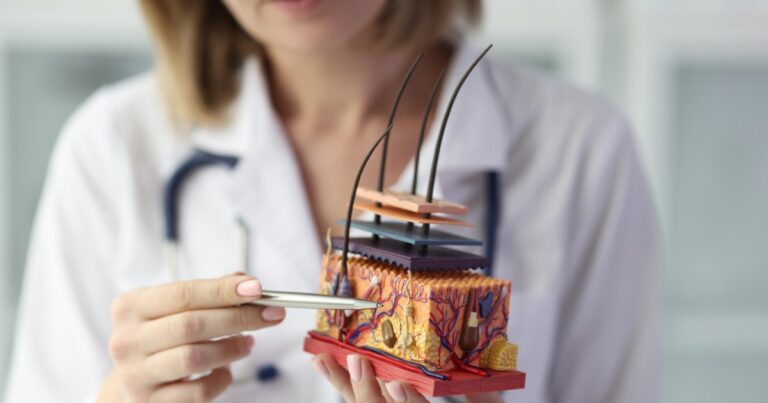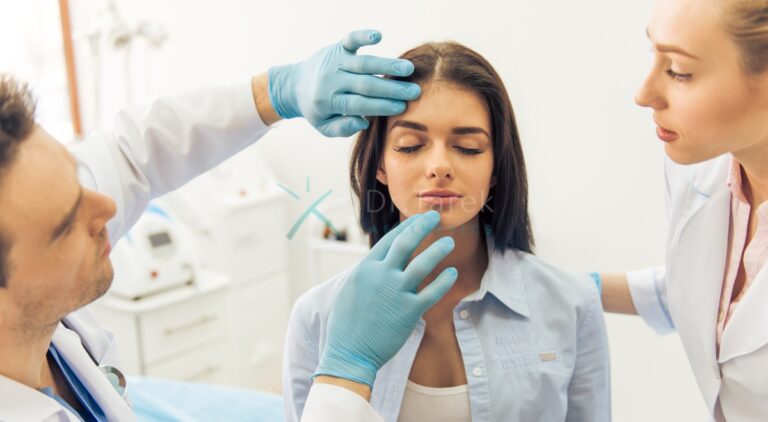Understanding Gynecomastia
What is Gynecomastia?
Gynecomastia is a medical condition characterized by the enlargement of breast tissue in males. This condition can affect one or both breasts and is often a source of embarrassment and discomfort for those who suffer from it. Gynecomastia is not just an accumulation of fat; it involves the growth of glandular tissue, which can be tender or painful.
Causes of Gynecomastia
Gynecomastia can be caused by a variety of factors, including hormonal imbalances, certain medications, and underlying health conditions. The primary cause is an imbalance between estrogen and testosterone levels in the body.
- Hormonal Imbalances: Increased estrogen or decreased testosterone levels.
- Medications: Certain drugs like steroids, anti-androgens, and some antidepressants.
- Health Conditions: Liver disease, kidney failure, and hyperthyroidism.
True Gynecomastia vs. Pseudogynecomastia
It’s essential to differentiate between true gynecomastia and pseudogynecomastia. True gynecomastia involves the enlargement of glandular tissue, while pseudogynecomastia is due to fat accumulation.
| Type | Tissue Involved | Common Causes |
| True Gynecomastia | Glandular Tissue | Hormonal Imbalances |
| Pseudogynecomastia | Fat Tissue | Obesity, Poor Diet |
Choosing a Plastic Surgeon for Gynecomastia Surgery
How to Choose a Plastic Surgeon for Gynecomastia Surgery
Selecting the right plastic surgeon is crucial for a successful gynecomastia surgery. Look for a board-certified surgeon with extensive experience in male breast reduction procedures.
Book A Consultation With Dr Tarek Bayazid
Top-rated Plastic Surgeon For Plastic Surgery in Dubai
Installment Plan Available
- Board Certification: Ensure the surgeon is certified by a recognized board.
- Experience: Look for a surgeon with a proven track record in gynecomastia surgeries.
- Patient Reviews: Read reviews and testimonials from previous patients.
Experience Counts: Why Dr. Tarek is the Right Choice
Dr. Tarek is a highly experienced plastic surgeon specializing in gynecomastia surgery. His expertise and compassionate approach make him a top choice for many patients.
- Extensive Experience: Over a decade of experience in gynecomastia surgeries.
- Patient-Centered Care: Focuses on individualized treatment plans.
- Proven Results: High patient satisfaction rates and excellent surgical outcomes.
Surgeons in Your Area: Finding a Plastic Surgeon Gynecomastia Near Me
Finding a qualified plastic surgeon near you can be challenging. Use online directories, read reviews, and consult with multiple surgeons to find the best fit.
- Online Directories: Websites like RealSelf and Healthgrades.
- Local Reviews: Check Google and Yelp reviews.
- Consultations: Schedule consultations with multiple surgeons.
Gynecomastia Consultation 
Your Initial Consultation and Tests
The initial consultation is a critical step in the gynecomastia treatment process. During this visit, the surgeon will evaluate your condition, discuss your medical history, and recommend appropriate tests.
- Medical History: Review of medications, health conditions, and lifestyle.
- Physical Examination: Assessment of breast tissue and overall health.
- Diagnostic Tests: Blood tests, mammograms, or ultrasounds if needed.
Understanding Gynecomastia: What to Expect
Understanding the nature of gynecomastia and the available treatment options is essential. Your surgeon will explain the condition, discuss potential causes, and outline the treatment plan.
- Condition Explanation: Detailed information about gynecomastia.
- Treatment Options: Surgical and non-surgical options.
- Expected Outcomes: Realistic expectations for results and recovery.
Drugs and Health Conditions That May Induce Gynecomastia
Certain drugs and health conditions can contribute to the development of gynecomastia. It’s important to identify and address these factors during your consultation.
- Medications: Steroids, anti-androgens, and some antidepressants.
- Health Conditions: Liver disease, kidney failure, hyperthyroidism.
- Lifestyle Factors: Alcohol and drug use.
Gynecomastia Treatment Options
Non-Surgical Treatment Options
Non-surgical treatments for gynecomastia include lifestyle changes, medication adjustments, and hormone therapy. These options are generally less invasive but may not be effective for all patients.
- Lifestyle Changes: Diet and exercise modifications.
- Medication Adjustments: Changing or discontinuing medications that cause gynecomastia.
- Hormone Therapy: Balancing estrogen and testosterone levels.
Surgical Gynecomastia Procedure
Fat Removal with Liposuction
Liposuction is a common technique used to remove excess fat from the chest area. This procedure is minimally invasive and involves small incisions.
- Minimally Invasive: Small incisions and quick recovery.
- Effective Fat Removal: Targets and removes excess fat tissue.
- Quick Recovery: Shorter downtime compared to other surgical options.
Surgical Extraction of Glandular Breast Tissue
For patients with true gynecomastia, surgical extraction of glandular tissue is often necessary. This procedure involves removing the glandular tissue through an incision.
- Direct Tissue Removal: Effective for true gynecomastia.
- Permanent Results: Long-lasting outcomes.
- Comprehensive Approach: Often combined with liposuction for best results.
Preparing for Gynecomastia Surgery 
How to Prepare for Male Breast Reduction Surgery
Proper preparation is key to a successful gynecomastia surgery. Follow your surgeon’s guidelines to ensure a smooth procedure and recovery.
- Pre-Surgery Consultation: Discuss the procedure and ask questions.
- Medical Clearance: Obtain necessary medical tests and clearances.
- Lifestyle Adjustments: Stop smoking and avoid certain medications.
Pre-Surgery Guidelines and Tips
Adhering to pre-surgery guidelines can help minimize risks and improve outcomes. Your surgeon will provide specific instructions tailored to your needs.
- Medication Management: Avoid blood thinners and certain supplements.
- Fasting: Follow fasting instructions before surgery.
- Arrangements: Plan for transportation and post-surgery care.
The Gynecomastia Surgery Procedure
How is Male Breast Reduction Performed?
Male breast reduction surgery involves removing excess fat and glandular tissue to create a flatter, more masculine chest. The procedure typically takes 1-2 hours and is performed under general anesthesia.
- Anesthesia: General anesthesia for comfort and safety.
- Incisions: Small incisions for liposuction and tissue removal.
- Tissue Removal: Combination of liposuction and glandular tissue extraction.
Procedure and Approach: What to Expect
Understanding the surgical approach and what to expect can help alleviate anxiety. Your surgeon will explain the steps involved and the expected outcomes.
- Surgical Steps: Detailed explanation of the procedure.
- Recovery Expectations: Information on recovery time and care.
- Potential Risks: Discussion of possible complications and how to avoid them.
Recovery from Gynecomastia Surgery
What Can I Expect During Recovery from Male Breast Reduction?
Recovery from gynecomastia surgery involves several stages, including initial healing, follow-up visits, and long-term care. Most patients can return to normal activities within a few weeks.
- Initial Healing: Swelling and bruising for the first few days.
- Follow-Up Visits: Regular check-ups with your surgeon.
- Long-Term Care: Maintaining results through a healthy lifestyle.
Gynecomastia Recovery: Tips and Timeline
Following your surgeon’s recovery guidelines can help ensure a smooth and successful recovery. Here are some tips and a general timeline for recovery.
- Rest and Recovery: Take it easy for the first week.
- Compression Garments: Wear as directed to reduce swelling.
- Activity Restrictions: Avoid strenuous activities for 4-6 weeks.
How Long Do Results from Male Breast Reduction Last?
The results from male breast reduction surgery are typically long-lasting, especially if you maintain a stable weight and healthy lifestyle. However, certain factors can affect the longevity of your results.
- Permanent Results: Long-lasting outcomes with proper care.
- Weight Management: Maintain a stable weight to preserve results.
- Follow-Up Care: Regular check-ups with your surgeon.
Results and Aftercare
Before and After Photos
Before and after photos can provide a visual representation of the potential results from gynecomastia surgery. These images can help set realistic expectations.
- Visual Representation: See the transformation.
- Realistic Expectations: Understand the potential outcomes.
- Patient Testimonials: Hear from others who have undergone the procedure.
How Noticeable are the Scars from Gynecomastia Treatment?
Scarring is a common concern for many patients. While some scarring is inevitable, skilled surgeons can minimize their appearance through careful incision placement and advanced techniques.
- Minimal Scarring: Small, discreet incisions.
- Healing Process: Scars fade over time with proper care.
- Scar Management: Use of scar creams and treatments.
Maintaining Your Results
Maintaining the results of your gynecomastia surgery involves a combination of healthy lifestyle choices and regular follow-up care. Your surgeon will provide specific guidelines to help you preserve your new chest contour.
- Healthy Lifestyle: Balanced diet and regular exercise.
- Weight Management: Avoid significant weight fluctuations.
- Follow-Up Care: Regular check-ups with your surgeon.
Additional Considerations
Male Chest Reduction and Contouring for Massive Weight Loss Patients
Patients who have undergone massive weight loss may have excess skin and tissue in the chest area. Male chest reduction and contouring can help achieve a more defined and masculine chest.
- Excess Skin Removal: Address loose skin after weight loss.
- Chest Contouring: Enhance chest definition and shape.
- Comprehensive Approach: Often combined with other body contouring procedures.
Corresponding & Complementary Procedures
Male Abdominoplasty
Male abdominoplasty, or tummy tuck, can be performed in conjunction with gynecomastia surgery to achieve a more balanced and toned appearance.
- Tummy Tuck: Remove excess skin and fat from the abdomen.
- Combined Procedures: Enhance overall body contour.
- Improved Results: Achieve a more harmonious appearance.
Jawline and Chin Contouring
Jawline and chin contouring can complement gynecomastia surgery by enhancing facial definition and balance.
- Facial Contouring: Improve jawline and chin definition.
- Combined Approach: Achieve a more balanced and masculine appearance.
- Enhanced Results: Complement the results of gynecomastia surgery.
Patient Safety and Care
Patient Safety: What You Need to Know
Patient safety is a top priority in gynecomastia surgery. Ensure your surgeon follows strict safety protocols and has a track record of successful outcomes.
- Safety Protocols: Adherence to surgical safety standards.
- Experienced Team: Skilled and qualified surgical team.
- Patient Monitoring: Continuous monitoring during and after surgery.
Patient Care Center: Support and Resources
A dedicated patient care center can provide valuable support and resources throughout your gynecomastia treatment journey. From pre-surgery consultations to post-surgery care, having access to comprehensive support can enhance your experience.
- Comprehensive Support: Access to a range of resources.
- Pre-Surgery Guidance: Detailed information and preparation tips.
- Post-Surgery Care: Ongoing support and follow-up care.
References and Further Reading
The Science Behind ‘Man-Boobs’
Understanding the scientific basis of gynecomastia can provide valuable insights into the condition and its treatment options.
- Hormonal Imbalances: The role of estrogen and testosterone.
- Medical Research: Studies on gynecomastia and its causes.
- Treatment Advances: Latest developments in gynecomastia treatment.
Puberty and Later-Stages in Life: Understanding Gynecomastia
Gynecomastia can occur at different stages of life, from puberty to adulthood. Understanding the age-related factors can help in managing and treating the condition.
- Puberty: Common occurrence during adolescence.
- Adulthood: Factors contributing to gynecomastia in later life.
- Treatment Options: Age-specific treatment approaches.
Contact Dr. Tarek
For those seeking expert care for gynecomastia, Dr. Tarek offers comprehensive consultations and personalized treatment plans. Contact us to schedule your consultation and take the first step towards a more confident you. Plastic surgeons perform reconstructions to help people look and feel better after injuries or surgeries Leading Nose Surgeon Dr. Tarek helps people fix their noses so they can breathe better and look great
Cosmetic procedures discomfort can make people feel sore or uncomfortable Getting beauty treatments might hurt a little but it usually goes away quickly Tarek eyelid enhancement is a special way to make eyes look bigger and more open It helps people feel more confident about how their eyes appear
Nasal surgery outcomes can improve breathing and appearance of the nose Many people feel satisfied with their Tarek male nosejob is a surgery to change the shape of a man’s nose It can help
- Contact Us: Schedule a comprehensive consultation.
- Find Your Surgeon: Plastic Surgeon Gynecomastia Near Me.
Frequently Asked Questions (FAQs)
How Much Does Gynecomastia Surgery Cost?
The cost of gynecomastia surgery varies depending on the surgeon’s experience, the complexity of the procedure, and the geographic location. On average, the cost ranges from $3,000 to $8,000.
Is There a Way to Treat Gynecomastia Without Surgery?
Non-surgical treatments for gynecomastia include lifestyle changes, medication adjustments, and hormone therapy. However, these options may not be effective for all patients, especially those with significant glandular tissue.
Is Liposuction Alone an Adequate Treatment for Gynecomastia?
Liposuction alone can be effective for patients with pseudogynecomastia, where excess fat is the primary issue. However, for true gynecomastia involving glandular tissue, a combination of liposuction and tissue extraction is often necessary.
During Male Breast Reduction Surgery, Will the Entire Gland Be Removed?
The goal of male breast reduction surgery is to remove enough glandular tissue to create a flatter, more masculine chest. In most cases, the entire gland is not removed, but enough tissue is extracted to achieve the desired result.
Can the Breast Tissue Come Back After Gynecomastia Surgery?
While gynecomastia surgery provides long-lasting results, there is a possibility of recurrence if the underlying causes are not addressed. Maintaining a stable weight and avoiding medications or substances that can cause gynecomastia can help prevent recurrence.
Is the Surgery for Gynecomastia Painful?
Gynecomastia surgery is performed under general anesthesia, so you will not feel any pain during the procedure. Post-surgery, you may experience some discomfort, which can be managed with pain medication prescribed by your surgeon.
Will Nipple Sensation Be Affected After Gynecomastia Surgery?
Nipple sensation may be temporarily affected after gynecomastia surgery due to swelling and tissue manipulation. In most cases, sensation returns to normal within a few months, but there is a small risk of permanent changes in sensation.








